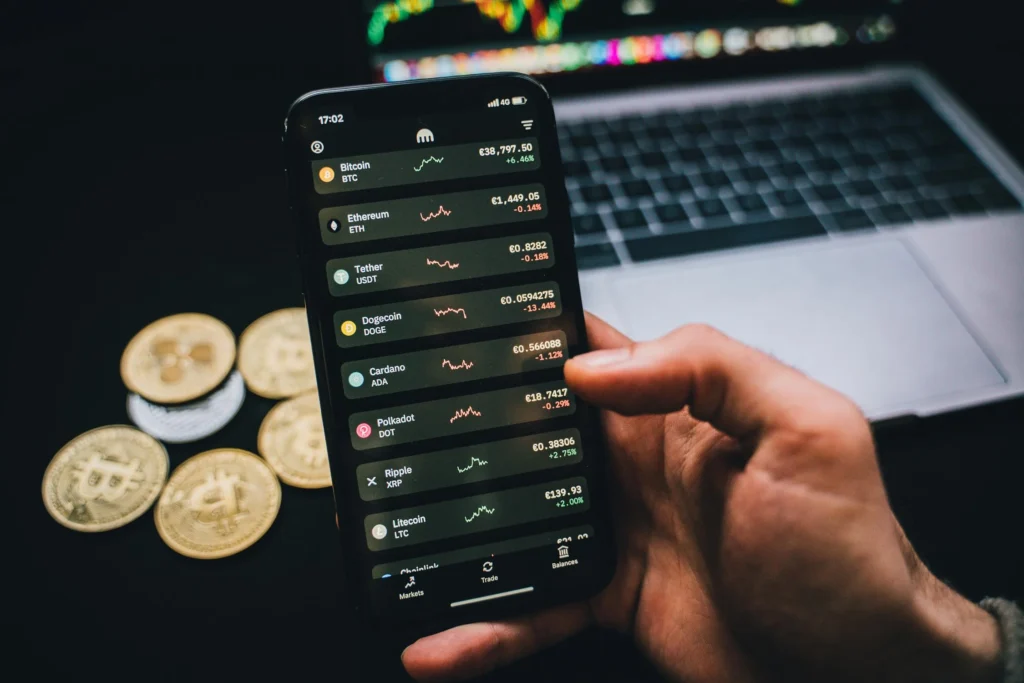As cryptocurrency evolves in 2025, the threats that put your digital assets at risk are also growing. With increasing adoption, there is more attention from hackers and scammers. Protecting your assets is more important than ever, whether you’re an experienced crypto investor or a newbie.
Fortunately, it does not require advanced technical skills; you’ll only need the right steps and mindset. Several steps help you stay ahead and ensure the safety of your hard-earned assets. Let’s dive into the most practical ways to safeguard your crypto in 2025.
Why Must You Protect Your Crypto Assets?
Unlike traditional banking systems, cryptocurrencies operate in a decentralized environment where you’re solely responsible for your security. Once lost or stolen, crypto assets are nearly impossible to recover, making security critical. There is typically no central authority to call for a refund or a reversal. These factors make them vulnerable to the following:
- Hacking
- Scams
- Phishing attacks
- Human errors
The increasing popularity and value of crypto assets have made them a solid target for cybercriminals. Threats have continued evolving, from compromised wallets to fake exchanges and malicious apps.
The irreversible nature of blockchain transactions means that one mistake can cause permanent loss. For example, sending funds to the wrong address could cause this. The lack of regulatory protection in many countries has also exposed people.
Without proper precautions, users may be at risk of financial loss and identity theft. Protecting your crypto assets secures your wealth, keeps you in control, and protects your privacy. Overall, proactive security measures have become necessary for people in this industry.
The Security Risks Accompanying Cryptocurrencies
Cryptocurrencies often have several security risks, ranging from phishing and hacking to scam projects. If not careful, users may unknowingly expose themselves to these risks, putting their assets in danger of loss or theft. Here are some of these security risks.
Hacking of Wallets or Exchanges
The hacking of wallets or exchanges is a significant security risk in crypto. Cybercriminals often target poorly secured wallets and centralized platforms to steal large sums. Without proper security measures, users can lose their holdings in one breach.
Since blockchain transactions are irreversible, recovering stolen crypto assets is nearly impossible. For this reason, strong personal security is necessary for adequate protection.
Loss of Private Keys
Losing your private keys means losing access to your crypto assets. Unlike traditional banking, blockchain systems do not have recovery and password reset options. The platform cannot help you retrieve your funds if you misplace or forget your keys. As a result, anyone using or investing in cryptocurrencies must note this information for better protection.
Phishing Attacks
Phishing attacks are a dangerous and common threat to crypto users. Scammers may impersonate platforms or individuals to trick users into revealing their private keys or login credentials.
These attacks may come through emails or messages, and once access is granted, hackers can drain wallets instantly. Verifying these emails and messages and staying vigilant can help protect against these risks.
Scam Projects
Scam projects pose a major risk in the crypto space, often disguising themselves as legitimate investments or new coins. These fraudulent ventures lure users with promises of high returns and disappear with investor funds.
Without proper research and due diligence, you may easily become a victim of scam projects. Since crypto is one of the largest financial markets, you must verify each project’s credibility and only invest in transparent ones.
Fake Websites or Mobile Apps
Fake mobile apps and websites are designed to mimic legitimate crypto platforms. They sometimes trick users into entering sensitive details, such as their private keys or login details. These clones can look exactly like trusted services, making them hard to identify. Once data is stolen, funds can be drained from wallets instantly.
Malware Targeting Crypto Assets
Malicious players sometimes build malware to target crypto assets. These kinds of malware can silently compromise your device and steal sensitive data, such as your wallet credentials and private keys.
Clipboard hijackers, keyloggers, and remote access control tools are commonly used to gain full control of wallets. By avoiding suspicious downloads and using the appropriate protection, you can safeguard your assets against these risks.
8 Effective Ways to Protect Your Crypto Assets
When using or investing in cryptocurrency, you must understand that your security is your responsibility. While several risks exist, you can effectively reduce them and protect your crypto assets with the right strategies. Here are ways to safeguard them.
Leverage Cold Storage Wallets
Cold storage wallets, such as hardware or paper wallets, store crypto assets offline, keeping them safe from online hacks and malware. By keeping the private keys disconnected from the internet, cold storage offers high security, especially for long-term holdings. It is ideal for keeping large amounts of crypto for extended periods.
Enable Two-Factor Authentication
Two-factor authentication (2FA) adds another layer of security to crypto accounts by requiring a second form of verification. This may be a code from an application or a device. Even if your password is compromised, 2FA helps to prevent unauthorized access. While simple, it helps to protect wallets, exchanges, and other platforms.
Use a Reliable Exchange
Another way to protect your crypto assets is by using a reliable exchange. Reputable platforms offer strong security features, insurance coverage, cold storage, and regular audits to safeguard users’ assets. For instance, if you buy Bitcoin from secure platforms such as Kraken, your funds are less likely to be compromised due to hacking or fraud.
Keep Your Software Updated
Another important way to protect your cryptocurrencies is by always updating your software. Wallets, exchanges, and security tools often release updates to fix vulnerabilities and improve protection against new threats.
Outdated software may expose you to bugs and exploits used by hackers. Updating your apps, operating system, and firmware ensures you use the most secure and reliable versions.
Use a Password Manager
A password manager protects your crypto assets by securely storing and organizing the passwords for your exchanges, wallets, and other accounts. This reduces the risk of weak or reused passwords, common targets for hackers. By using a password manager, you can ensure each account has a unique and strong password, making it harder for cybercriminals to gain access.
Back up Your Data Frequently
Frequent data backups are essential for protecting your crypto holdings. By backing up important information, such as private keys and wallet details, you can recover access in case of hardware theft or failure. To reduce the risk of loss, store backups in multiple locations, such as offline storage and encrypted drives.
Monitor Your Accounts for Suspicious Activity
Monitoring suspicious activity is necessary to detect potential security breaches early enough. Keep an eye on the login attempts, transactions, and any unauthorized changes to the account’s settings. Set up alerts for large withdrawals, and remember that quick action can help minimize losses if your account gets compromised.
Avoid Using Public Wi-Fi
Hackers sometimes exploit unsecured networks to intercept sensitive data. So, avoiding public Wi-Fi helps to safeguard your assets. Public Wi-Fi can expose you to man-in-the-middle attacks, where cybercriminals private keys and login credentials. Accessing your crypto accounts from secure, private connections reduces the risks of theft.
Endnote
When using or investing in cryptocurrency, people often face risks of hacking, scams, phishing attacks, or plain human errors. To protect these assets, you must use cold storage wallets, two-factor authentication, reliable exchanges, and updated software. A password manager, frequent data backups, account monitoring, and secure internet connections also help to safeguard crypto assets.




One thought on “Practical Ways to Protect Your Crypto Assets in 2025”
The mention of human error is something many people overlook. It’s easy to get complacent, but I’ve seen friends lose funds simply by sending them to the wrong address. Crypto security is a full-time job!